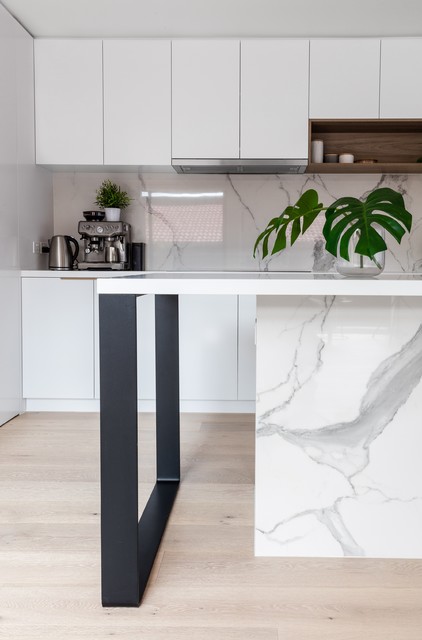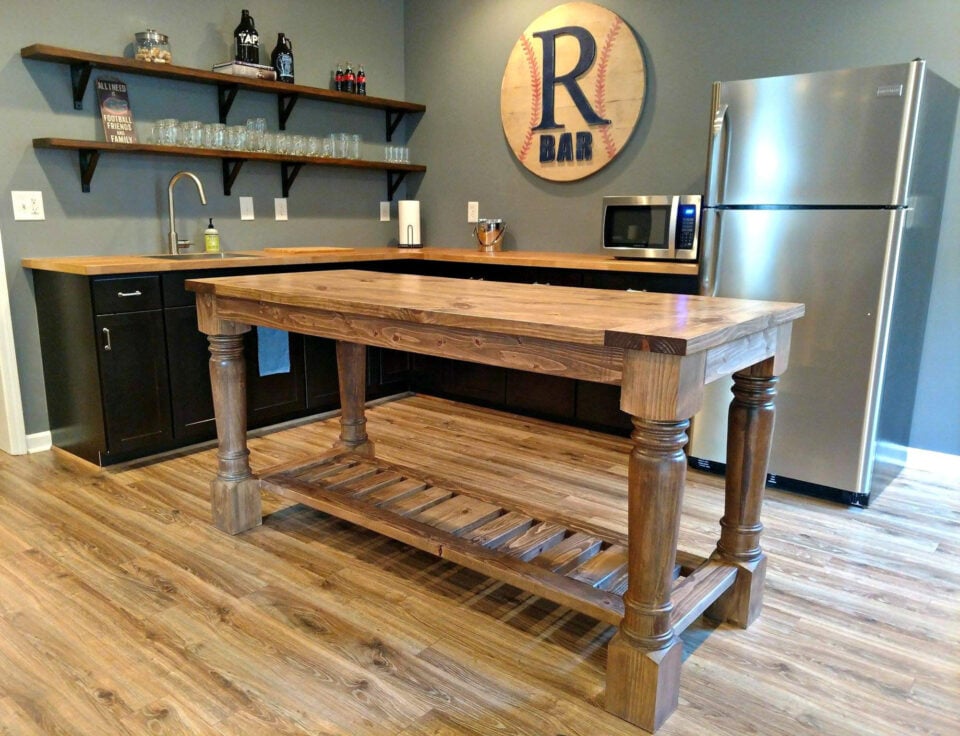Just how to Set Up a Kitchen Island Leg for Maximum Security and Style
Wiki Article
Top Considerations When Choosing a Kitchen Area Island Leg for Modern Kitchen Area Insides
In the world of modern kitchen insides, the option of a cooking area island leg is critical, influencing both aesthetics and functionality. As these aspects link, they elevate even more concerns concerning exactly how to achieve the perfect balance between style and usefulness, leaving one to consider the ramifications of each choice on the general kitchen area experience.Product Options
When it concerns choosing a kitchen area island leg, material selections play a vital function in both visual appeals and performance. kitchen island leg. The most usual materials consist of wood, metal, and composite options, each offering distinctive benefits and possible drawbacksTimber is favored for its warmth and traditional charm, providing an ageless look that complements various kitchen area styles. It is highly flexible, permitting for personalization in terms of coatings and shades. Wood may call for more upkeep to stop bending or damage from wetness.
Steel, on the various other hand, brings a commercial and modern panache to kitchen area islands. Stainless-steel and functioned iron are prominent selections, recognized for their toughness and resistance to put on. They can hold up against the rigors of day-to-day use but may do not have the warmth connected with timber.
Composite products, such as crafted wood or artificial blends, use a balance between rate, resilience, and visual appeals. These options are usually designed to imitate the look of all-natural materials while providing resistance to scratches and spills.
Eventually, the selection of material must straighten with the general kitchen area layout and intended usage, guaranteeing that the kitchen island leg is both functional and aesthetically enticing.
Style and Style
The design and style of a kitchen area island leg substantially contribute to the overall aesthetic of the space, matching the chosen product. When selecting the leg style, consider the building design of the kitchen. For example, smooth, minimalist legs constructed from stainless steel or acrylic harmonize with contemporary styles, while ornate, transformed timber legs enhance conventional or farmhouse appearances.Furthermore, the surface of the leg can affect the aesthetic impact; a refined chrome or matte black coating might evoke modern-day sophistication, while distressed wood speaks to rustic appeal. The leg's form additionally plays a crucial function-- right, angular types convey an even more industrial feel, whereas bent or conical legs introduce a softer, much more welcoming look.
Including ornamental components, such as decorations or makings, can add personality and personality to the kitchen area island, further enhancing its function as a centerpiece. Inevitably, the selected leg style need to not only straighten with the total kitchen style yet also show the homeowner's personal taste, making certain that the kitchen area island comes to be a unified and functional centerpiece within the contemporary cooking area interior.
Height and Proportions
Accomplishing the right elevation and percentages for a kitchen area island leg is critical for both capability and looks. Kitchen islands generally vary in height from 28 to 36 inches, relying on their meant use-- whether as a food preparation surface, dining area, or workspace. Criterion kitchen counter elevation is approximately browse this site 36 inches, making it essential that the legs you select enhance this elevation to provide a smooth, incorporated look.Proportions additionally play a crucial function in the aesthetic balance of the kitchen. The dimension and weight of the leg must agree with the general style of the island - kitchen island leg. A slim leg may be ideal for a minimalistic or contemporary island, while a more substantial leg might be needed for rustic or standard styles. In addition, take into consideration the spacing in between the legs; ample range makes certain comfort and convenience of motion around the island.
When selecting the height and percentages of the kitchen island leg, bear in mind the total style style of your kitchen area. This attention to information not only improves the capability of the room yet additionally contributes to a cohesive and visually attractive interior decoration.
Security and Assistance
Constantly making sure stability and assistance in cooking area island legs is essential for both safety and security and functionality. A well-constructed kitchen island need to hold up against daily usage, including weight from appliances, food preparations, and social celebrations. For that reason, the option of legs should focus on robust products and layouts that can supply ample assistance.When reviewing stability, consider the leg's material-- steel, aluminum, or hardwood often supply premium stamina contrasted to lighter alternatives. Additionally, the design ought to feature a wide base to distribute weight uniformly and reduce the risk of tottering or tipping. For example, legs developed with an A-frame or cross-bracing can significantly improve security.

Including these factors to consider will not just enhance the overall safety of the kitchen area room however also enhance the durability and performance of the kitchen area island, making it a useful focal point in modern-day kitchen interiors.
Finishing Touches
When it involves finishing a kitchen area island, thoughtful ending up touches can significantly improve both its visual charm and capability. Selecting the right leg design is critical, but enhancing it with suitable information can transform the entire space. Think about including decorative elements such as toe kicks or baseboards that match the kitchen cabinetry or flooring to develop a smooth appearance.
A natural color scheme and product selection will elevate the kitchen island, making it a fascinating focal factor. By paying attention to these completing touches, homeowners can produce a kitchen area island that is both attractive and useful, providing to their way of living and layout choices.
Verdict

In the world of contemporary cooking area insides, the selection of a kitchen island leg is essential, affecting both looks and capability.The style and layout of a kitchen island leg significantly contribute to the total aesthetic of the area, matching the selected material.Attaining the ideal height and proportions for a cooking area island leg is vital for both performance and looks.Consistently ensuring security and support in kitchen island legs is essential for both security and capability.In summary, choosing a kitchen area island leg for modern-day interiors needs careful factor to consider of material options, layout style, height, proportions, and stability.
Report this wiki page